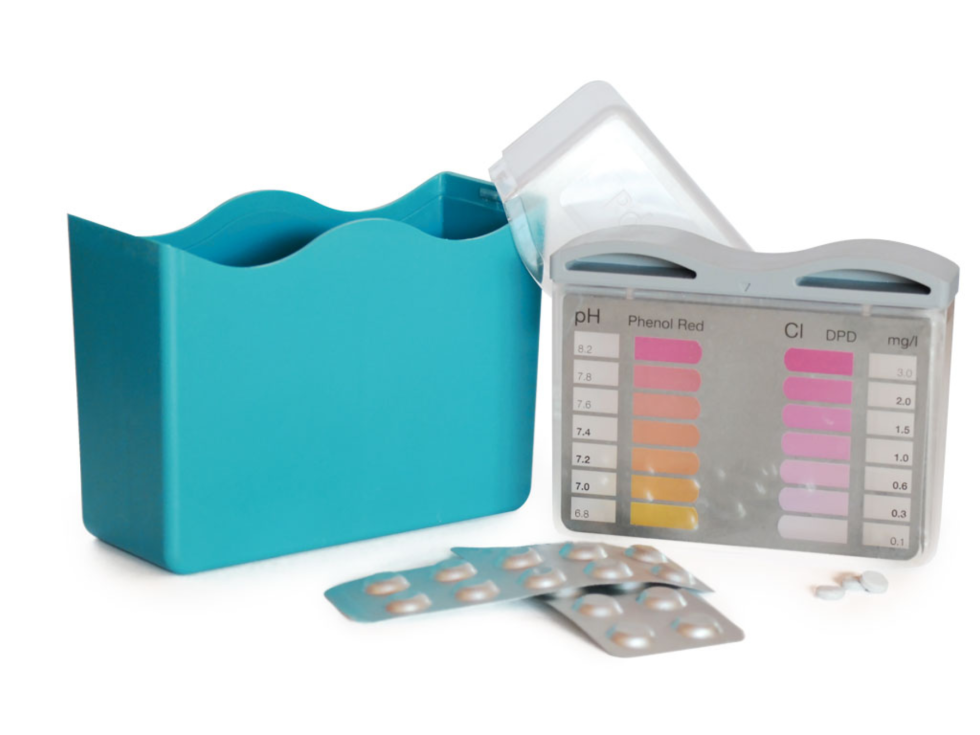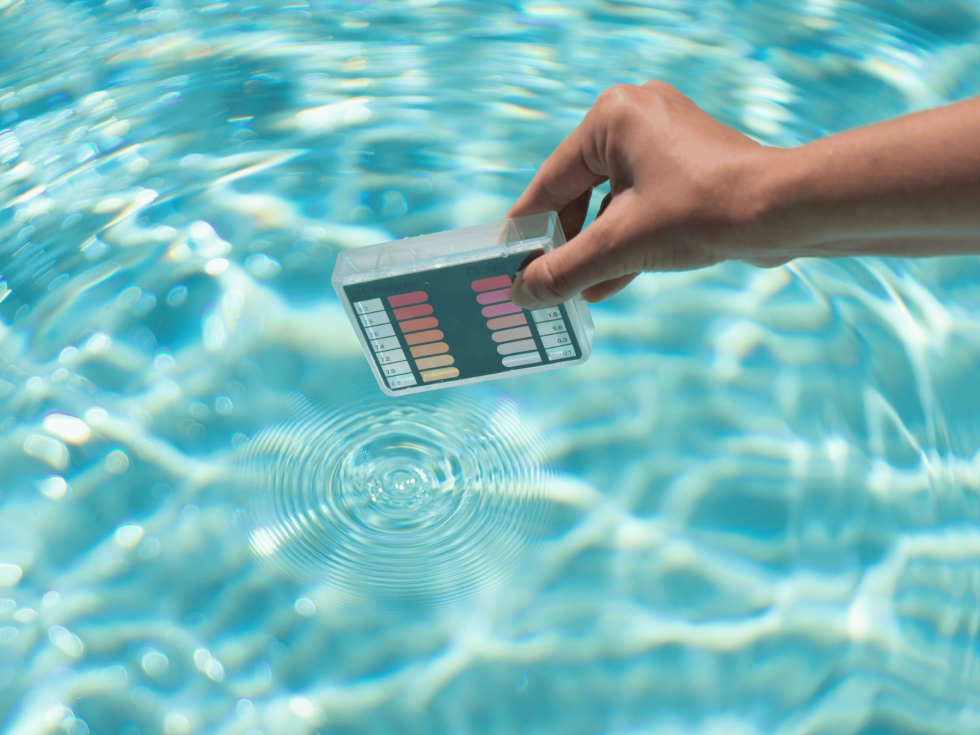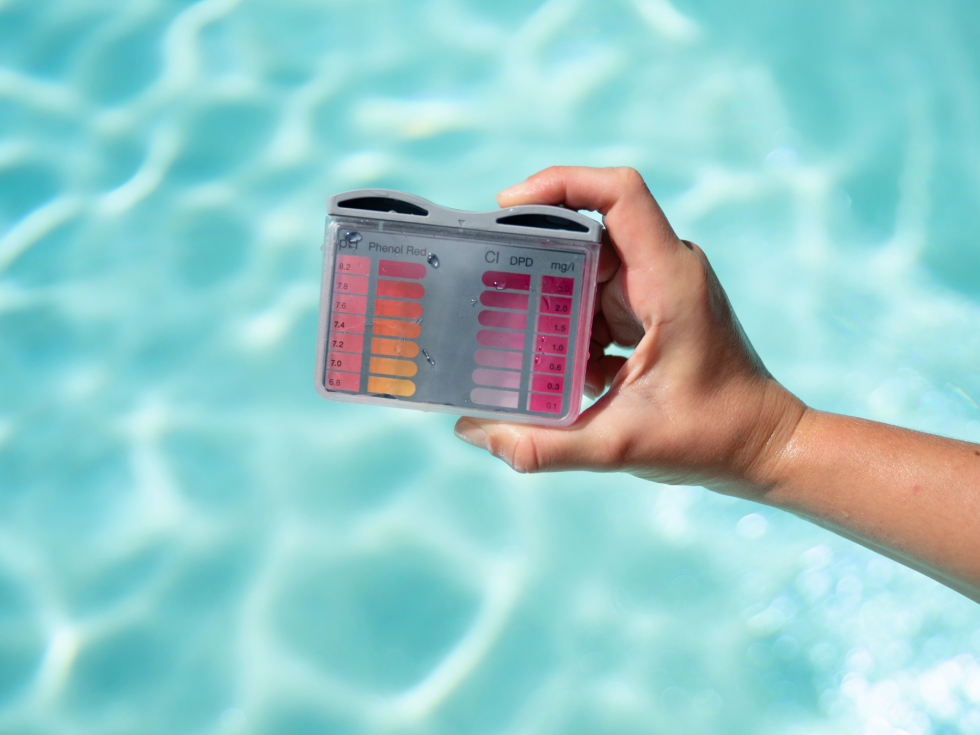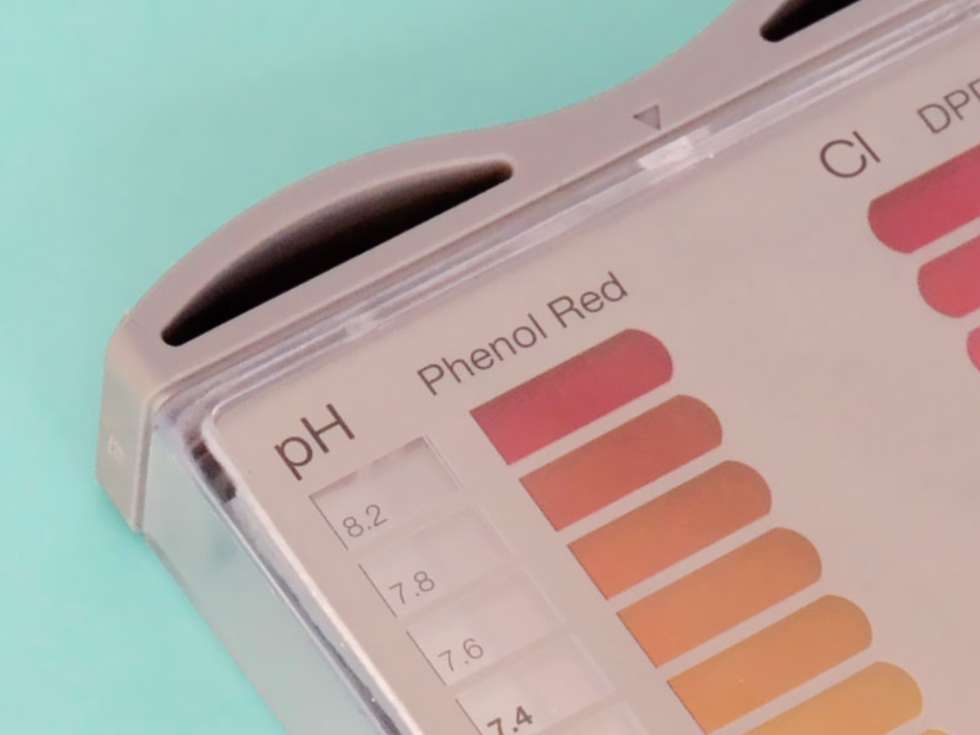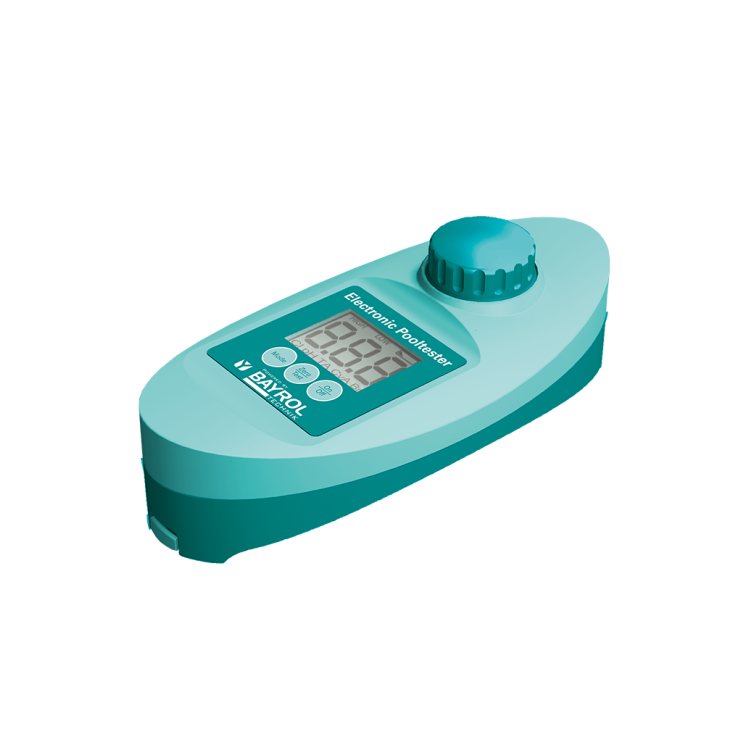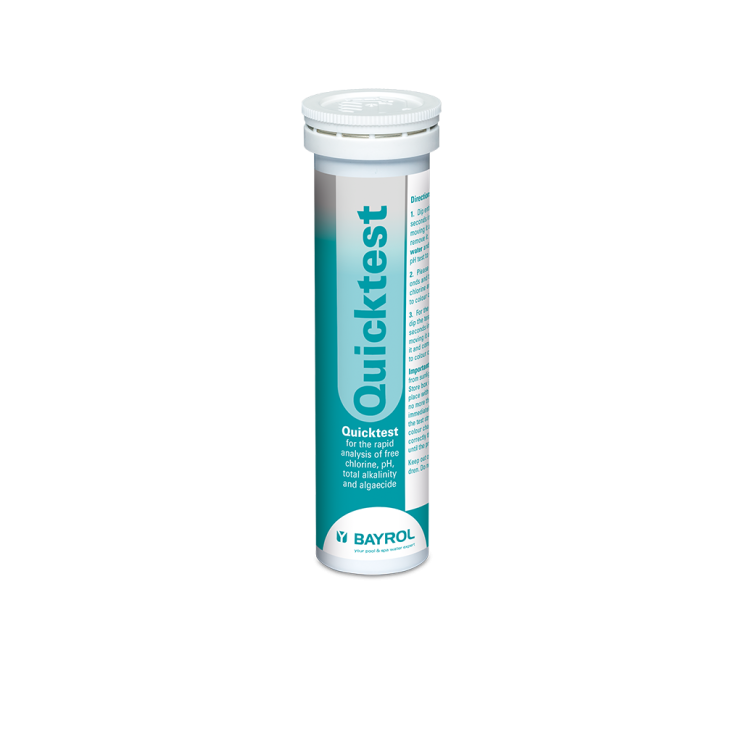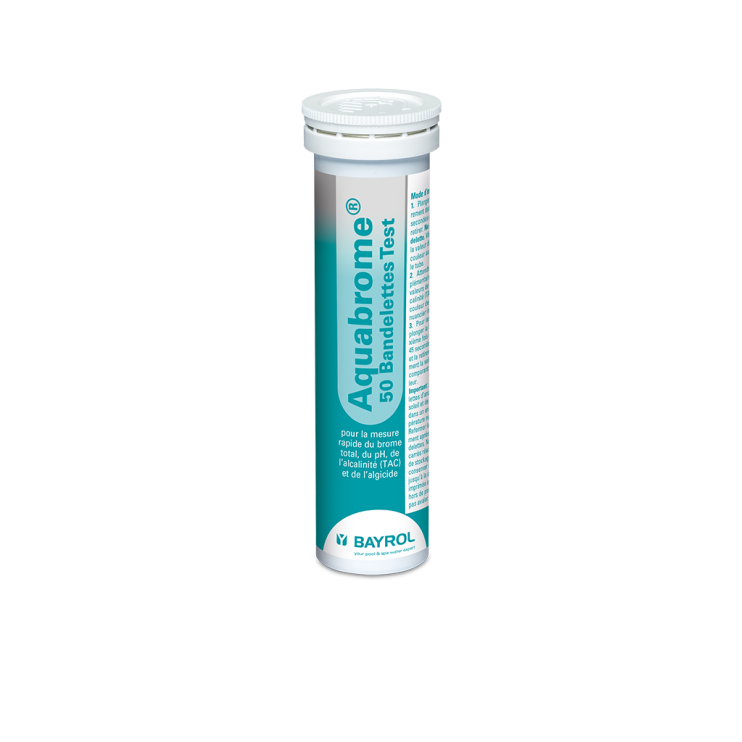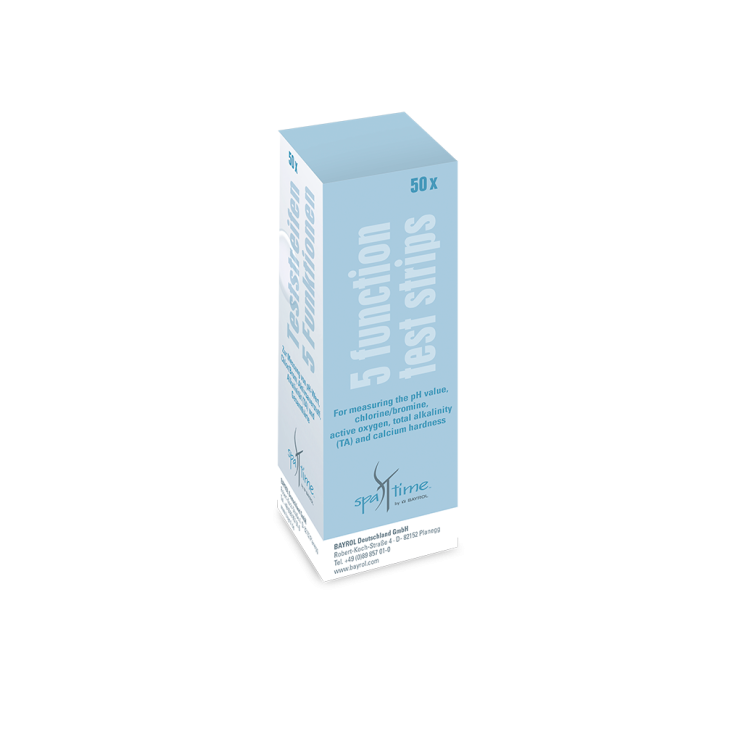Analysis kit to measure pH-value and free chlorine content in swimming pool water. Contains 20 tablets of Phenol Red and 20 tablets of DPD 1.
Learn more
Find a distibutor
Usage
- Fill the container by immersing it in the pool water to a depth of at least 20 cm.
- pH measurement: Add the Phenol Red tablet to the left-hand compartment (pH).
- Chlorine measurement: Add the DPD1 tablet to the right-hand compartment (Cl).
- Important: avoid touching the tablets with your fingers.
- Replace the lid and shake the Pooltester until the tablets are dissolved.
- Compare the colour obtained with the reference colour chart.
- Rinse the Pooltester thoroughly after each use to avoid any measurement errors due to residual substances.
Ideal pH-value: between 7.0 and 7.4
Ideal chlorine level: between 0.5 and 2 mg/l
Recommendations : Protect the Pooltester from sunlight and moisture. Keep in a cool, dry place (storage temperature below 30°C). Keep out of reach of children. Do not ingest.
Download
Ideal for manual analysis
of the water in your pool or spa.
Pooltester pH/Cl allows you to analyse the free chlorine and pH values of your pool water.
To ensure that your water is properly treated, you need to check its parameters regularly. With Pooltester pH/Cl, you can easily and accurately determine the pH-value and free chlorine content of your pool water. Supplied with 20 Phenol Red tablets for pH analysis and 20 DPD 1 tablets for free chlorine analysis, Pooltester ph/Cl has two measuring chambers to hold the water to be analysed.
Take the water sample directly from the pool. Add the appropriate reagent to each measuring chamber, and observe the results by comparing the colour obtained with the reference colour chart. If the parameters are not within the optimum values, they should be corrected using the appropriate products.
